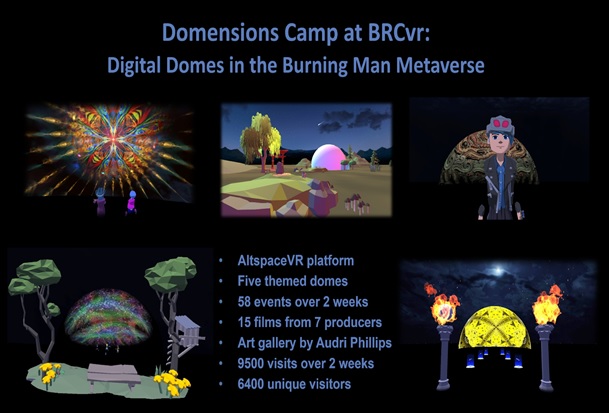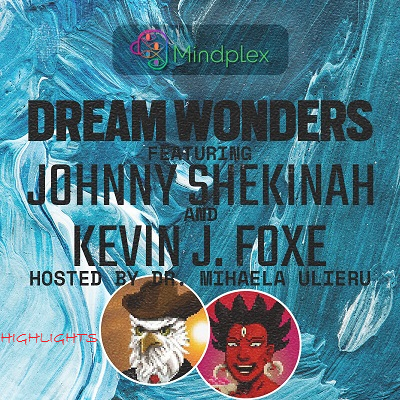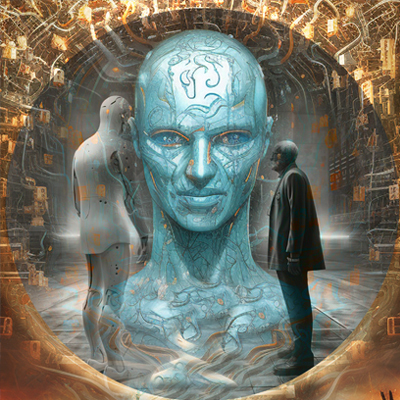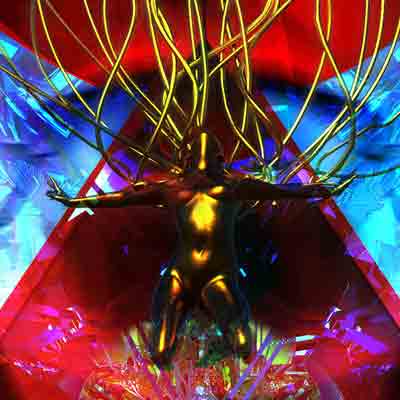Technoshaman: from worldbuilding to mindbuilding: Part 2
Feb. 03, 2023. 6 mins. read.
28 Interactions
In Part 1, I introduced the archetype of the technoshaman, one who uses XR (extended reality — VR, AR, and MR) technologies to craft multisensory digital worlds and experiences that elevate and harmonize human consciousness on a mass scale. In Part 2, we deep-dive into “digital pharmacology” and use XR to evoke alternate states of consciousness.
The social impacts of contemporary media are well known. Film and television can engage, inform and motivate on a mass scale and are no longer solely dominated by major studios who must make significant investments in productions. And the increasing democratization of media has placed great power in the hands of nearly every individual.
More than 6.5 billion people — 80% of the world’s population — now own smartphones. Social media has enabled nearly anyone to influence the minds of hundreds, thousands, or millions of people with videos, news, opinions and niche programming.
Storytellers intentionally use the power of media and entertainment to achieve social or global change through social impact entertainment. As described by Ella Saltmarsh, stories can be tools for “building community through empathy and coherence,” connecting diverse people and generating “narratives that hold together groups, organizations, and movements.”
Stories can re-author our personal and cultural narratives and mythic narratives or worldviews, including values, mindsets, rules and goals. “Stories deeply affect our psyche and collective direction of travel,” Saltmarsh says.
Unlike film, television, or streaming media, where passive audiences watch visuals framed on a wall or a handheld device, XR (extended reality) worldbuilders use presence, embodiment, and agency for spatial or environmental storytelling. These place us within the “storyworld” with XR’s ability to simulate real-world experiences, giving this new medium a deeper, more profound effect on consciousness.
The power of XR
Everyone in the metaverse can become a worldbuilder, giving them the power to evoke memes, moods, and states of consciousness in other participants. The result is akin to a virtual brain corpus callosum between groups and individuals, allowing for direct transmission of consciousness from worldbuilder to participant.
Of course, music, arts, entertainment, architecture, literature, and other real-world modes of expression have long been used to evoke profound brain states in participants. But XR supercharges this process, due to various factors:
- XR interfaces create a wideband interface to the participant’s brain and nervous system. Immersive displays can place a pixel on nearly every nerve ending in the eye. 3D audio simulates spatial and spectral properties of sound. And XR controllers capture natural movement and gestures.
- XR production tools and robust user interfaces, enhanced by AI, accelerate worldbuilding without the need to write code. Virtual worldbuilding is not burdened by the need for physical materials, construction, labor, and logistics, vastly accelerating the democratization of virtual worldbuilding compared to physical worldbuilding.
- XR performers can easily inhabit and command virtual worlds, controlling complex interactions and effects through natural gestures and simple controllers. Imagine a live theater that suddenly morphs into a cave, a castle, or another world altogether.
- Virtual worlds combine music, arts, entertainment, storytelling, social media, architecture, and multisensory modalities into a seamless experience for participants, compounding their psychological power.
- Unlike physical spaces, virtual environments are inexpensive, easily replicated, and massively scalable with global reach.
The metaverse
The XR technology market will expand by a factor of 10 in the next five years, according to a forecast by Statista. Over the long term, wearable XR interfaces are expected to replace handheld smartphones. And some expect the metaverse to replace the internet, despite Meta’s problems.
To articulate and guide the development of the metaverse “for the greatest good for the greatest number” of participants, virtual reality pioneer Tony Parisi recently proposed these Seven Rules of the Metaverse:
- There is only one Metaverse
- The Metaverse is for everyone
- Nobody controls the Metaverse
- The Metaverse is open
- The Metaverse is hardware-independent
- The Metaverse is a Network
- The Metaverse is the Internet

Microsoft’s AltspaceVR platform (credit: Vortex Community Circle)
Widespread adoption of the metaverse using XR interfaces will place unprecedented power and influence into the hands of worldbuilders. But will worldbuilders use this power wisely?
Digital pharmacology
XR technologies can extend beyond simple storytelling. Immersive multisensory media can evoke specific states of consciousness, or “digital pharmacology.” Applications could include enhanced entertainment, education, leisure and lifestyle, enhanced well-being, spiritual ceremonies, and a wide variety of clinical applications.
There’s a rich history of sensory experiences being used to alter consciousness. Music is a powerful mood-altering agent that can induce or modify cognitive states and perceptions. Sound healing and vibroacoustic healing have been proven effective. Simple nature sounds can improve health, increase positive affect, and lower stress.
Visual stimuli such as natural environments — both real and virtual — can similarly affect physiological states (as measured by blood pressure and muscle tension). They can even alter our perception of music. Other powerful sensory modalities include haptics (touch) and aroma.
Transformational and mood-elevating experiences can take on many forms. Here’s a partial list:
- Awaken the Mind
- Inspire imagination, creativity, and open-mindedness
- Educate, train, inform
- Epiphanies and new understandings
- Open the Heart
- Empathy, compassion, understanding
- The emotional shift towards love, respect, joy, happiness
- Activate the Spirit
- Awe, wonder, ecstasy, bliss
- Transcendent, numinous or “unity” experiences
- Cosmic consciousness
- Going Deep
- Mindfulness and contemplative states
- Trance, dream, and mystical states
- Psychedelic states
- Soothe the Beast
- Relaxation, sense of calmness
- Feeling of safety, restoration
- Awaken the Senses
- Arouse passion, romance, sensuality
- Energize and Engage
- Awaken the body and mind
- Stimulate, motivate, alert, play
- Entrain the Brain
- New kinesthetic skills, break/make habits, reprogram
Mindfulness states have a broad range of health benefits. Studies have shown decreased anxiety and depression, improved immune function, mitigation of cognitive decline due to aging, increased mental clarity and focus, improved heart health and mental health, increased longevity and self-confidence, improved moods, improved sleep, pain mitigation and more.
Likewise, studies have shown that psychedelic states can treat obsessive-compulsive disorder, end-of-life psychological distress, alcohol and tobacco addiction, and major depressive disorder. More research is needed to validate the degree to which XR experiences can evoke such states. However, XR applications are emerging to guide patients receiving psychedelic therapies.
Awe is one of the most powerful emotions one can experience. In a partnership with Cirque du Soleil, Dr. Beau Lotto’s Lab of Misfits conducted an ambitious study on the emotion of awe. The findings suggest that awe motivates us to step forward into a world of uncertainty in the search for answers, raises our risk tolerance, increases social behavior, and can even reframe who we believe we were in the past. Multiple studies have also found evidence that experiencing awe makes us kinder and more generous. These are all good things for this day and age!
Let us know your thoughts! Sign up for a Mindplex account now, join our Telegram, or follow us on Twitter.


.png)

.png)


.png)







0 Comments
0 thoughts on “Technoshaman: from worldbuilding to mindbuilding: Part 2”